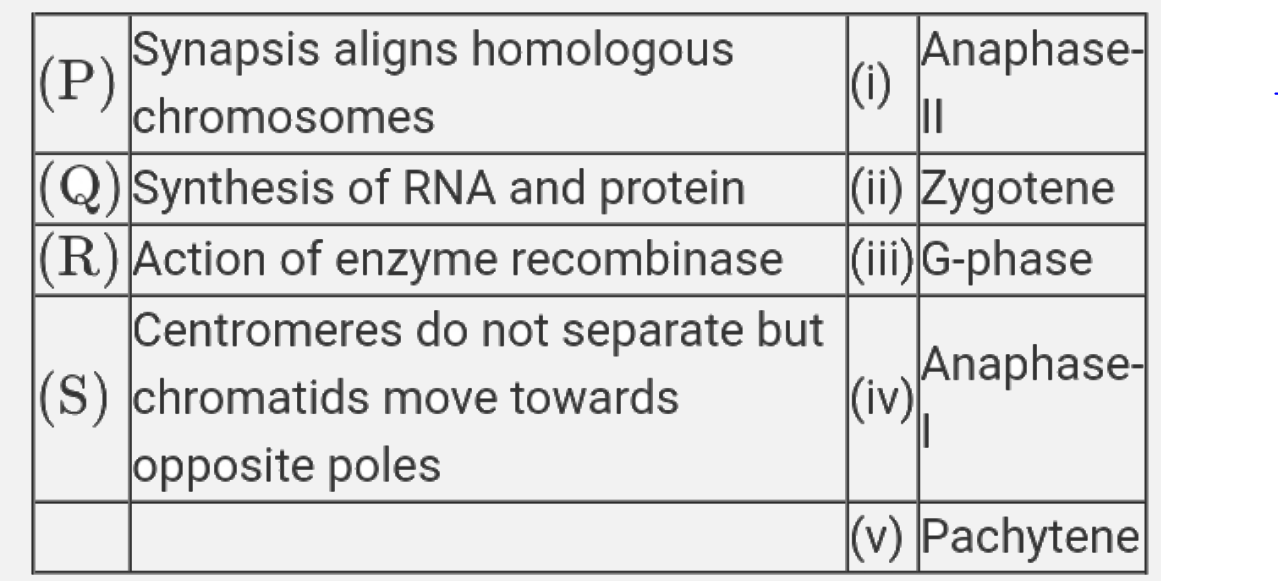Chromatid-type breaks occur during the cell cycle in the
S phase
G1 phase
G2 phase
mitosis
The correct Answer is:A
Step-by-Step Solution:
1. Understanding Chromatid-Type Breaks: Chromatid-type breaks refer to the breaks that occur in the chromatids during the cell cycle. These breaks can affect the genetic material during cell division.
2. Identifying the Cell Cycle Phases: The cell cycle consists of several phases including:
- G1 phase (Gap 1)
- S phase (Synthesis)
- G2 phase (Gap 2)
- M phase (Mitosis), which includes sub-phases like prophase, metaphase, anaphase, and telophase.
3. Focusing on Mitosis: Among these phases, mitosis is the primary phase where chromatid-type breaks are relevant. Mitosis is responsible for the division of the cell's nucleus and the distribution of genetic material to daughter cells.
4. Identifying the Specific Stage: Within mitosis, the anaphase stage is critical for chromatid-type breaks. During anaphase, the sister chromatids are pulled apart towards opposite poles of the cell.
5. Mechanism of Chromatid-Type Breaks: The breaks occur at the centromere, which is the region where the two sister chromatids are joined. The spindle fibers attach to the centromeres and facilitate the separation of the chromatids.
6. Conclusion: Therefore, chromatid-type breaks occur during the anaphase of mitosis, specifically at the centromere where the sister chromatids are separated by spindle fibers.
Final Answer: Chromatid-type breaks occur during the cell cycle in the anaphase stage of mitosis.
---
- G1 phase (Gap 1)
- S phase (Synthesis)
- G2 phase (Gap 2)
- M phase (Mitosis), which includes sub-phases like prophase, metaphase, anaphase, and telophase.
Topper's Solved these Questions
- CELL CYCLE AND CELL DIVISION BOOK - ICSECHAPTER - CELL CYCLE AND CELL DIVISION EXERCISE - TEST YOUR PROGRESS (Fill in the bleanks with appropriate words )
16 Videos
- CELL CYCLE AND CELL DIVISION BOOK - ICSECHAPTER - CELL CYCLE AND CELL DIVISION EXERCISE - TEST YOUR PROGRESS (State whether the following statements are true)
15 Videos
- CELL : THE UNIT OF LIFE BOOK - ICSECHAPTER - CELL : THE UNIT OF LIFE EXERCISE - Differentiate Between
18 Videos
- CELLULAR RESPIRATION IN PLANTS BOOK - ICSECHAPTER - CELLULAR RESPIRATION IN PLANTS EXERCISE - REVIEW QUESTIONS ( LONG ANSWER TYPE QUESTIONS)
15 Videos
Similar Questions
Each cell grows during the cell cycle in
View SolutionMatch the processes occurs during cell cycle with the names of the events

View SolutionCell growth occurs during
View SolutionDuring cell cycle, DNA replicates
View SolutionChromatid bodies occurs in Entamoeba during
View SolutionAnalyze the events occurring during every stage of the cell cycle, how the amount of DNA content (C) per cell changes and select the correct option.
View SolutionAmitosis occurs during cell division in
View SolutionBriefly describe the events that occur during the luteal phase of the menstrual cycle.
View SolutionWhich one of the following is the incorrect matching of the events occurring during the menstrual cycle?
View SolutionLH surge occurs during which phase of menstrual cycle ?
View Solution
